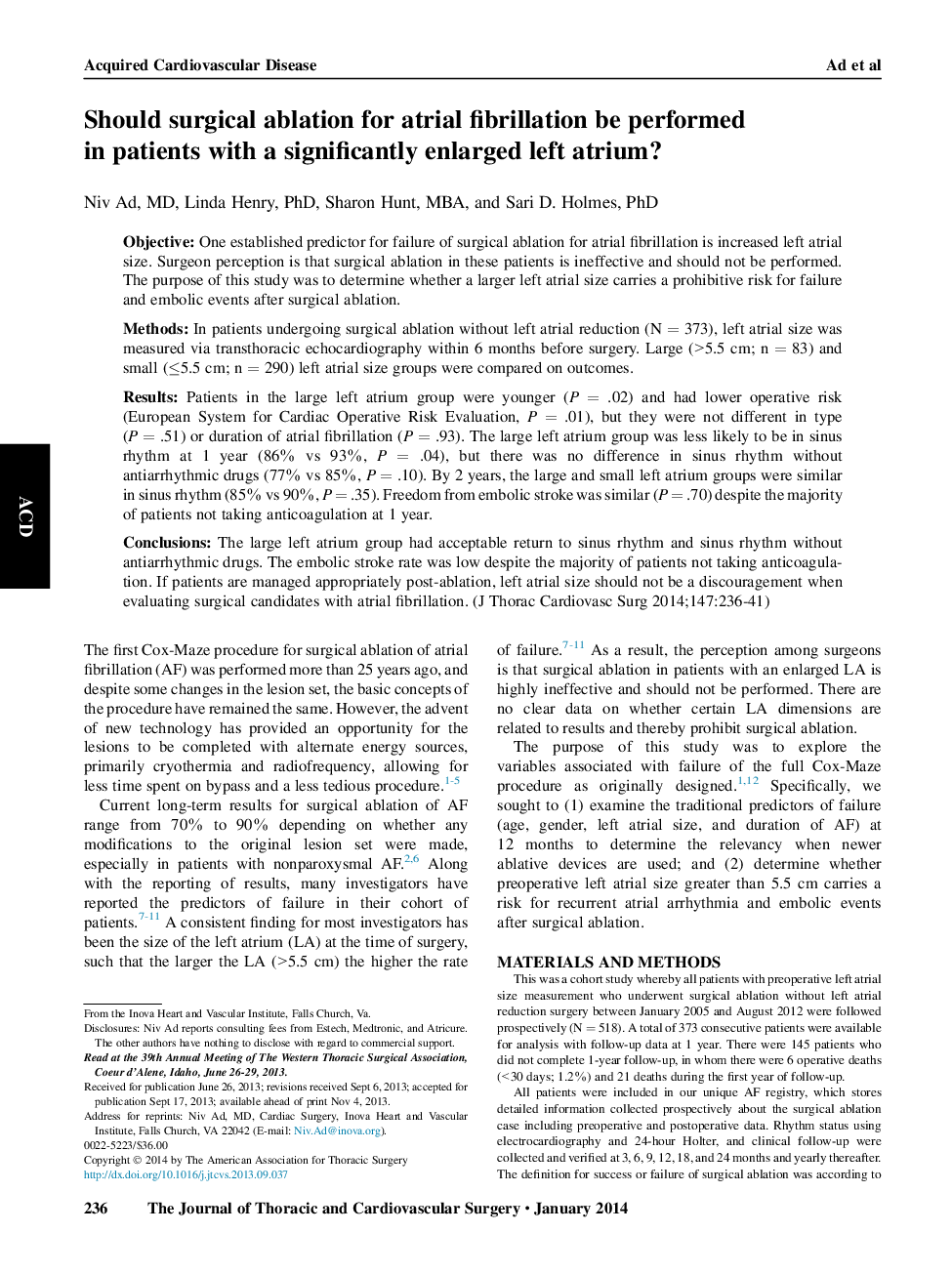| Article ID | Journal | Published Year | Pages | File Type |
|---|---|---|---|---|
| 2980591 | The Journal of Thoracic and Cardiovascular Surgery | 2014 | 6 Pages |
ObjectiveOne established predictor for failure of surgical ablation for atrial fibrillation is increased left atrial size. Surgeon perception is that surgical ablation in these patients is ineffective and should not be performed. The purpose of this study was to determine whether a larger left atrial size carries a prohibitive risk for failure and embolic events after surgical ablation.MethodsIn patients undergoing surgical ablation without left atrial reduction (N = 373), left atrial size was measured via transthoracic echocardiography within 6 months before surgery. Large (>5.5 cm; n = 83) and small (≤5.5 cm; n = 290) left atrial size groups were compared on outcomes.ResultsPatients in the large left atrium group were younger (P = .02) and had lower operative risk (European System for Cardiac Operative Risk Evaluation, P = .01), but they were not different in type (P = .51) or duration of atrial fibrillation (P = .93). The large left atrium group was less likely to be in sinus rhythm at 1 year (86% vs 93%, P = .04), but there was no difference in sinus rhythm without antiarrhythmic drugs (77% vs 85%, P = .10). By 2 years, the large and small left atrium groups were similar in sinus rhythm (85% vs 90%, P = .35). Freedom from embolic stroke was similar (P = .70) despite the majority of patients not taking anticoagulation at 1 year.ConclusionsThe large left atrium group had acceptable return to sinus rhythm and sinus rhythm without antiarrhythmic drugs. The embolic stroke rate was low despite the majority of patients not taking anticoagulation. If patients are managed appropriately post-ablation, left atrial size should not be a discouragement when evaluating surgical candidates with atrial fibrillation.
